Teaching social skills can be tricky—especially when we’re working with young learners or students who need extra support understanding how to interact with others. That’s where scenarios for social skills come in! Using short, simple social situations to spark discussion and practice is one of the most effective ways to build real-life skills in a safe and structured way. Here are 3 reasons why scenarios for social emotional learning are a must-have in your social skills toolbox.
Scenarios Give Real-Life Examples Of Social Skills In Children
Let’s face it—just telling a child to “be kind” or “use your words” doesn’t always stick.
Kids need examples they can picture and relate to.
Scenarios help take abstract ideas and turn them into something real: “What would you do if your friend took the toy you were playing with?” Suddenly, kindness has a context, and students can connect with the lesson in a more meaningful way.
That’s why it is important to use real-life situations. These scenarios should be things that could really happen in their lives. It’s best to use settings that are in students’ daily lives. Think of the various school settings – classroom, hallway, recess, the lunchroom, etc.
Check out the scenarios from this teaching resource on flexible thinking below for some ideas.
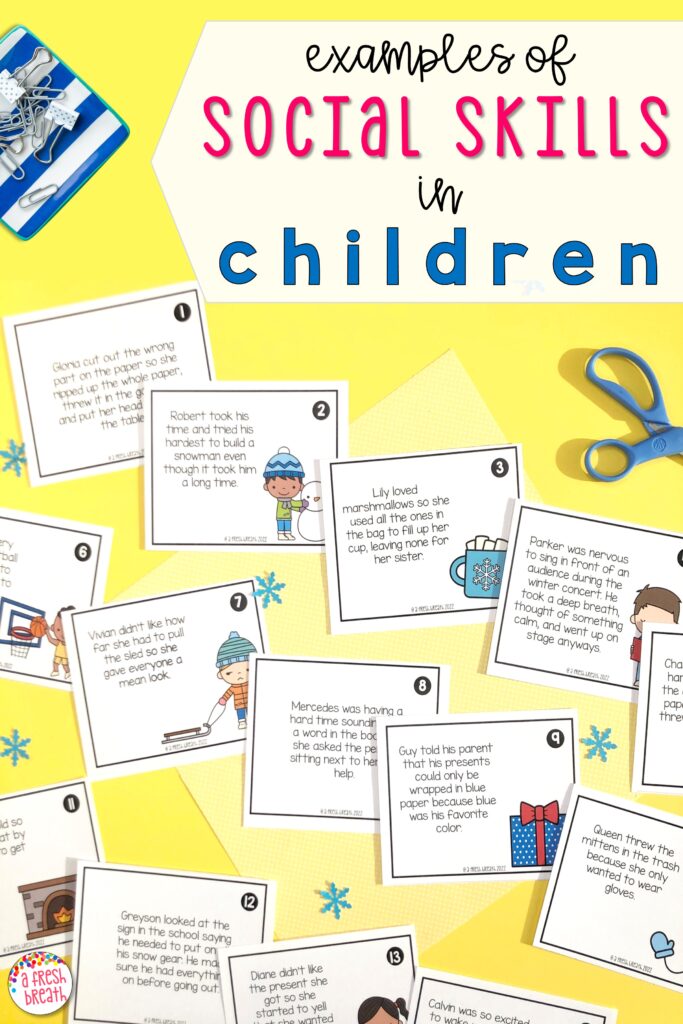
Critical Thinking With Social Scenarios For Social Skills
One of the best things about using social skills scenarios is how naturally they spark real conversations with kids.
When you ask a group of students, “What would you do if your friend knocked over your block tower and didn’t say sorry?”—you’re not just teaching behavior, you’re inviting them to think. They reflect on feelings, consider different choices, and talk through possible outcomes.
These discussions help kids understand that there isn’t always just one right answer.
Maybe one student would tell the teacher, another might try to rebuild and talk it out, and someone else might feel too upset to respond right away. Talking through these differences helps students build empathy and learn that people respond to situations in different ways—and that’s okay.
It also gives them a chance to practice why-thinking: “Why do you think your friend acted that way?” or “Why might it be helpful to take a deep breath first?” That kind of reasoning is key to developing emotional intelligence and better social awareness.
Plus, these conversations often lead to unexpected teachable moments—like discussing tone of voice, body language, or how to fix a friendship after a mistake. Scenarios open the door for all of it, helping students not just know what to do, but understand why it matters.
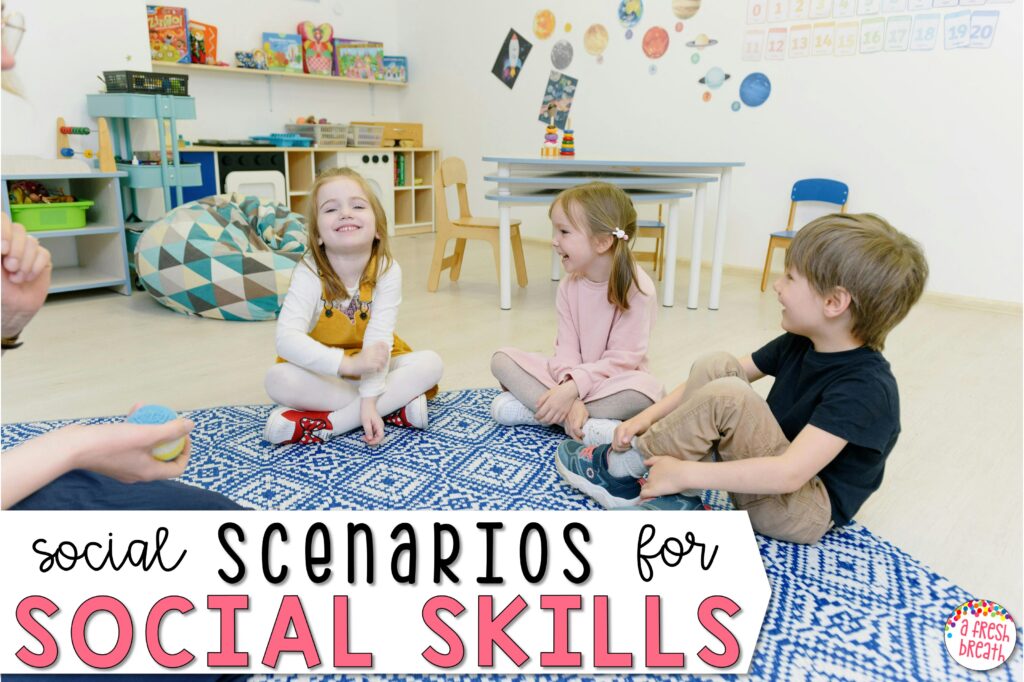
Role Play Scenarios For Teaching Social Skills
One of the biggest benefits of using scenarios is that they let kids practice social problem-solving before the emotions and stakes are high. In real-life situations—like when someone cuts in line or a game doesn’t go their way—kids often react quickly and emotionally.
But when we walk through those same types of situations ahead of time in a calm, low-pressure setting, it gives them the chance to slow down, think, and plan out better responses.
Scenarios act like “social rehearsals.” Just like we don’t expect kids to read fluently without practicing first, we can’t expect them to navigate tricky social moments without support.
Acting out or talking through what to do when a friend won’t share or when they feel left out gives them language and strategies to use later.
It also gives them permission to make mistakes and try again—without anyone getting hurt or upset. They can say the wrong thing, see how it feels, and try something new.
That kind of safe practice is gold when you’re helping kids build social-emotional skills.
You can even take it a step further with physical role playing scenarios for social skills. This is where one student acts out the scenario, another responds, and the class gives kind feedback. It’s powerful, practical, and it builds social confidence little by little.
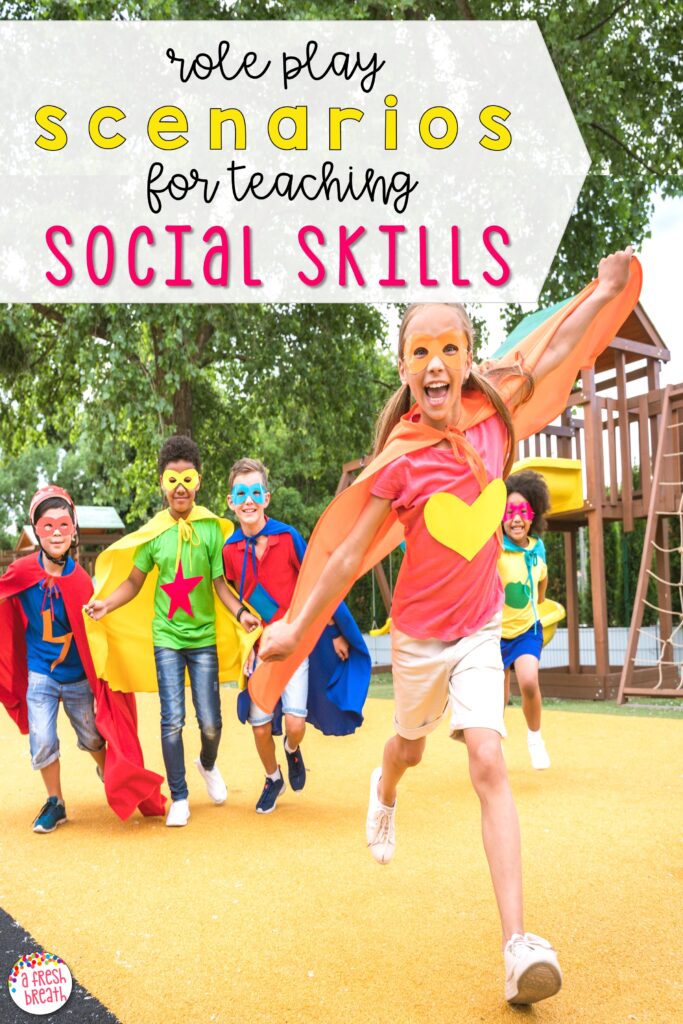
Free Task Cards with Scenarios
Looking for some task cards to work on these critical skills? Then grab this free teaching resource.
If you have students who are struggling with what is flexible thinking in different situations, then this free resource is for them. Students will look at different situations that could happen in their lives to practice identifying what is flexible thinking versus stuck thinking.
This is an ideal way to start your students using role play scenarios for social skills or to practice their critical thinking skills in social situations.
Grab your free set of flexible thinking task cards here.
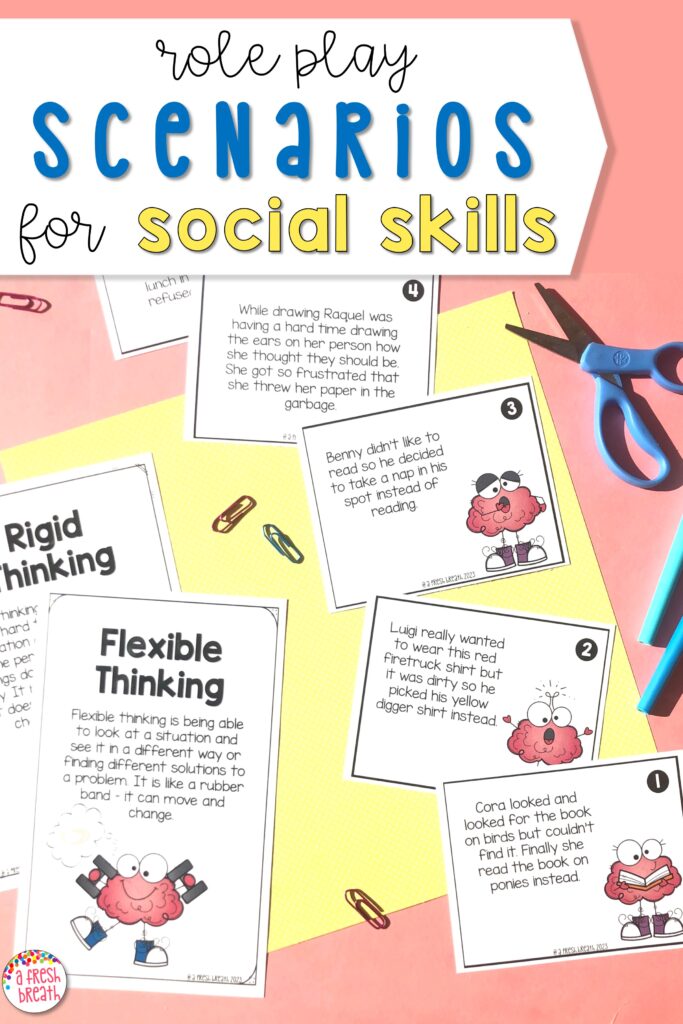
Looking for More on Basic Social Skills?
If you need more than just social skills role play scenarios ideas to teach social skills to young children, check out these helpful posts.
How to Teach Sharing with Children’s Books – Books are an entertaining and effective way when wondering how to teach sharing. Check out these easy ideas on how to incorporate them along with some great read aloud titles.
5 Steps to Teaching Expected vs Unexpected Behavior in the Elementary Classroom – Expected vs unexpected behavior can be tricky to teach to elementary students. Follow these 5 steps to make teaching these important concepts easier than ever.
Increasing Thinking Flexibility 3 Ways with Task Cards – Speaking of scenarios, task cards are a great spot to use real-life scenarios. Check out this post for ideas to use task cards in easy but effective ways.
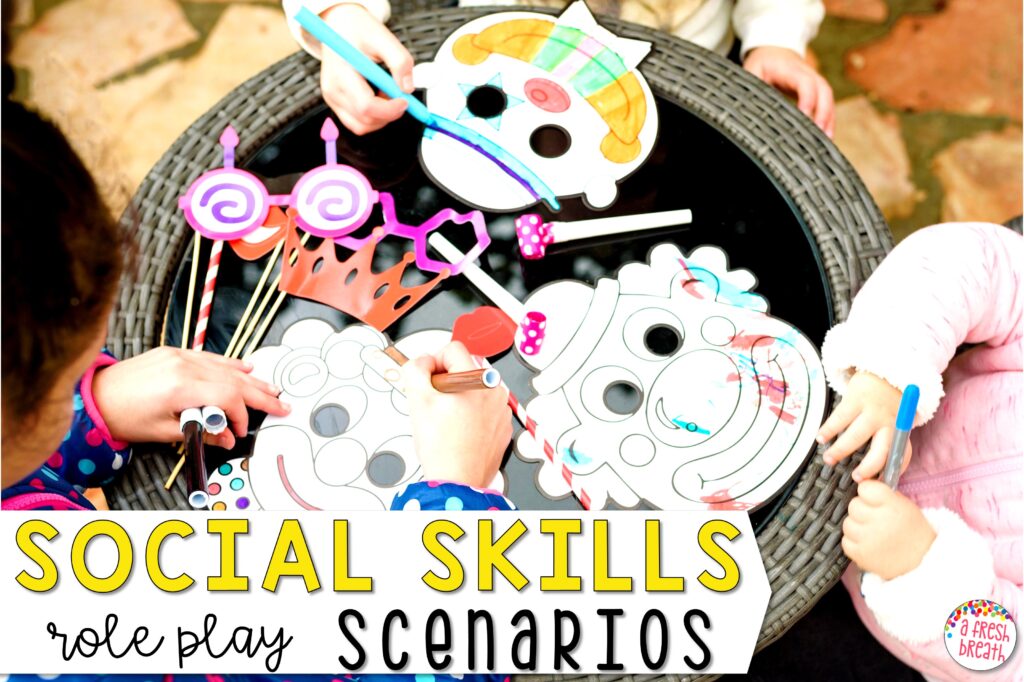
Whether you’re working on taking turns, handling frustration, or learning how to join a group, social skill scenarios can be a fun and powerful way to teach those skills. You can write your own based on classroom behavior, pull some from a resource, or even make it into a daily warm-up. However you use them, your students will benefit from the chance to pause, think, and grow socially.
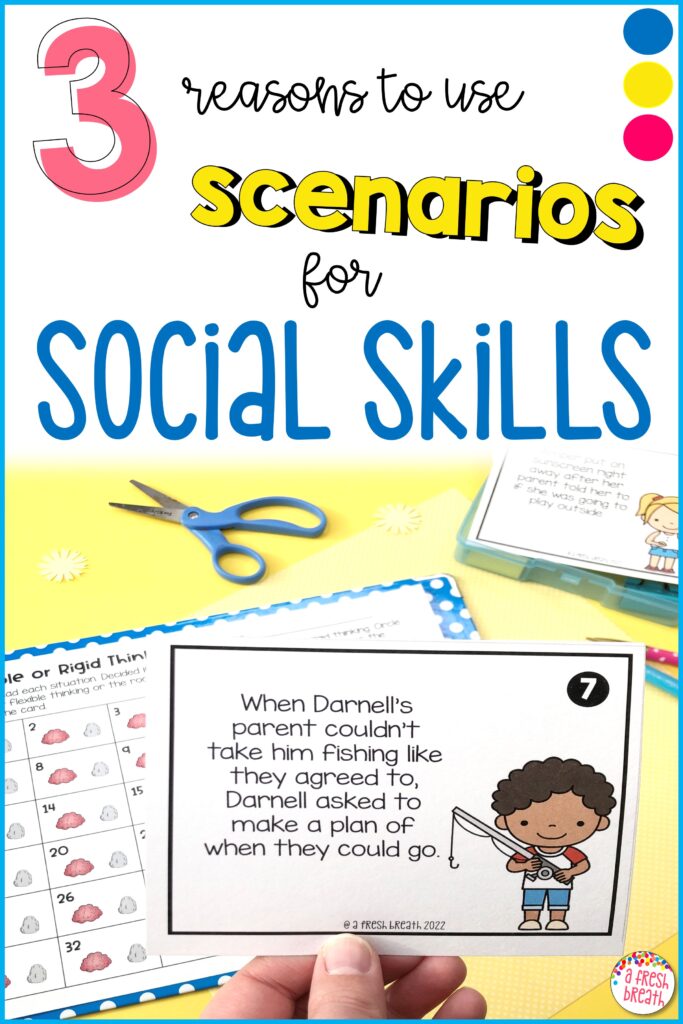
Happy Teaching!




